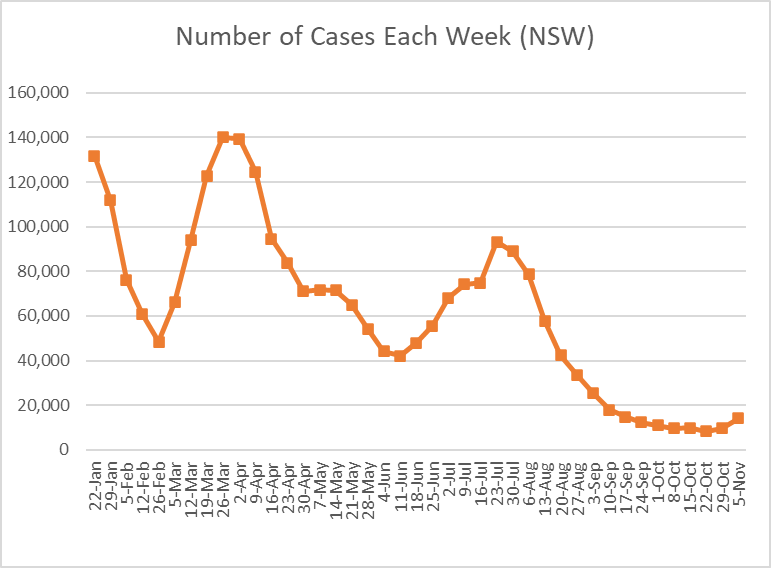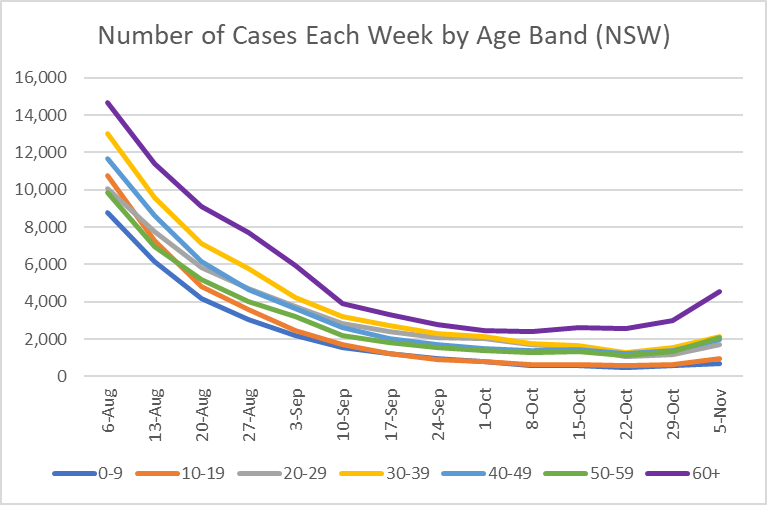The NSW Health epi report for the week ending 5 November was released today.
I feel like I follow NSW reasonably closely, but there were a few surprises in here for me.
#Covid19Aus #Covid19NSW
You can find the full report here...
health.nsw.gov.au/Infectious/cov…
I feel like I follow NSW reasonably closely, but there were a few surprises in here for me.
#Covid19Aus #Covid19NSW
You can find the full report here...
health.nsw.gov.au/Infectious/cov…
Surprise #1: Cases were up 45% this week, with 14,000 cases reported.
While this is still much lower than earlier in the year, it is a lot more cases than the weekly update suggested (the last weekly update was to 3 Nov, had 12,500 cases reported, up 24% on the previous week).
While this is still much lower than earlier in the year, it is a lot more cases than the weekly update suggested (the last weekly update was to 3 Nov, had 12,500 cases reported, up 24% on the previous week).

Surprise #2: The number of PCR tests conducted was up a bit (10%), but positivity increased A LOT to 14%. Not good. 

By age band, there was a large increase in the 60+ age group. The group that is more likely to test and more likely to report it. 

All of that together does not bode well for tomorrow's weekly update.
But hospital admissions were up by about 30% (allowing for late reported admissions, shown as the "unknown" age group in the graph).
The increase was mainly in the 60-79 age group.
The increase was mainly in the 60-79 age group.

There were 24 deaths.
Note there was a change in the way deaths are counted, starting last week. NSW Health only counts deaths once a death certificate is lodged with Births, Deaths, Marriages.
Note there was a change in the way deaths are counted, starting last week. NSW Health only counts deaths once a death certificate is lodged with Births, Deaths, Marriages.

Surprise #3: the big growth in variants of concern was in BA.2.75, specifically the BR.2 sub-lineage. Not BQ.1.1. of XBB.
Not sure if @Mike_Honey_ has anything to add here?
Ends/
Not sure if @Mike_Honey_ has anything to add here?
Ends/

• • •
Missing some Tweet in this thread? You can try to
force a refresh












